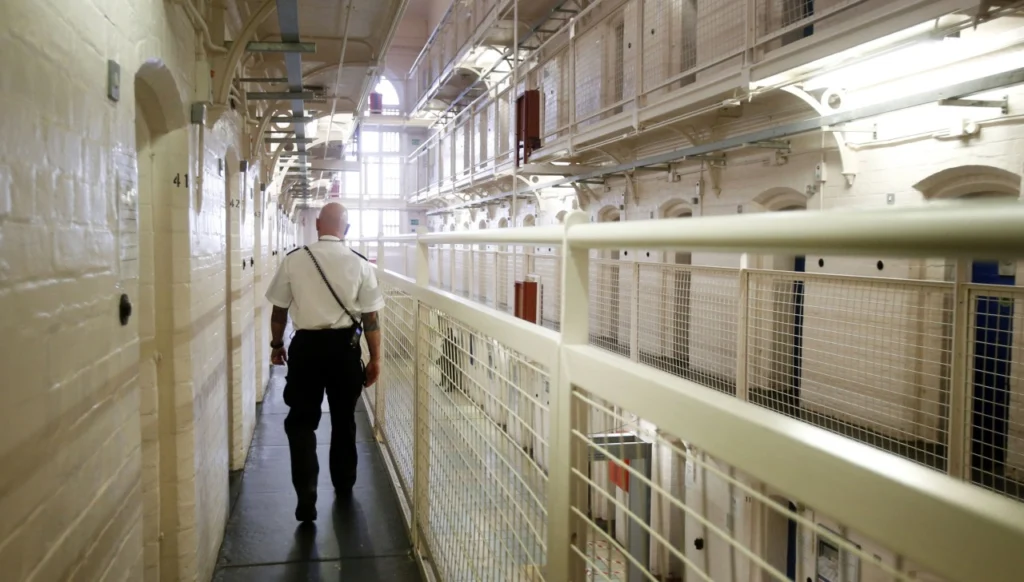
Independent prison capacity review points to systemic problems
05/08/2025

Police Oracle
Russell Webster reviews a study commissioned by the Ministry of Justice and carried out by a former chief inspector of prisons.
The Ministry of Justice has today (5 August 2025) published the Independent Prison Capacity Review. The review, led by Dame Anne Owers, looked at the origins of the capacity crisis, the reasons why supply and demand did not meet, and the consequences for prisons and other parts of criminal justice. It sets out recommendations to help future governments avoid the cycle of repeated prison capacity crises.
This is a comprehensive and lucid report as you would expect from Dame Owers who is a previous Chief Inspector of Prisons (2001-2010) and has chaired the Independent Police Complaints Commission as well as being the Director of JUSTICE. It is a valuable resource; setting out the growth of the population crisis, the responses of different governments and the costs of these responses (both present and future). It provides a forensic analysis of the causes and makes sensible recommendations to try to avoid the same problems in the future.
And yet. There is little in the review that most people in the field did not already know and the analysis and recommendations are almost identical to those made by David Gauke in his sentencing review. Does it seem reasonable to wonder why the Government commissioned this further review and whether it was more about stacking up the evidence that the prison crisis was not one of their making (although the previous Labour administration certainly contributed)?
Dame Owers sums the whole issue neatly in her introduction:
“The 2022-24 prison capacity crisis was a conjunction of some specific circumstances. However, it was also a symptom of a systemic and long-running problem: the apparently irresistible pressure for more and longer prison sentences coming up against the immovable object of the difficulty, expense and overall effectiveness of building and running more prisons. In general, population pressure has constrained prisons’ capacity to operate safe, positive and purposeful environments that can reduce the likelihood of reoffending. From time to time that pressure erupts into a crisis that requires executive actions, sometimes unnoticed and sometimes public.”
This article highlights some key figures from the Review and shares its conclusions and primary recommendations.
Costs
The original forecasted cost for providing 20,000 new prison places was £5.2 billion. It has now nearly doubled to between £9.4 billion and £10.1 billion. Although there have been problems in the MoJ’s administration of the prison building programme, the Review also notes that the rising cost also reflects significant cost increases for basic construction materials since 2020, including a 50% rise in the price of ready mixed concrete and a 70% rise in fabricated structural steel between 2020 and 2024. If any of this building is deferred, it will add to cost: the review was told that delays to new prison builds cost around £8 million per quarter.
In March this year, the capital cost of each new prison place was priced at £600,000 up from £500k last year.
Running costs will also, of course, rise with an expanded prison estate. HMPPS estimates that the expanded prison estate will cost around an additional £480 million a year by 2027-28, and around £670 million extra a year (at 2024 prices) if the 20,000 places programme is fully delivered.
Closures and dilapidation
At the same time as new prisons have been built or planned, prison spaces have been lost because of closures and dilapidations. Since 2010, around 7,500 places have been lost as a result of the closure of prisons or wings. An additional 4,000 places have been lost due to dilapidations, due to critical infrastructure failings, and in particular fire safety concerns following the Grenfell Tower tragedy.
Conclusions & Recommendations
Dame Owers points out that everyone knew about the looking prison capacity crisis and that select committees, the National Audit Office and others drew governments’ attention to it but this made no difference. Her proposals aim to “set up and reinforce systems that do not just signal problems and approaching crises, but stimulate preventive action to avoid them.”
Among her recommendations are a ten-year strategy for developing prison and probation capacity. She echoes the Sentencing Review in recommending an independent body to highlight the impact of any changes to the CJS on prison capacity.
Like David Gauke, she envisages a bigger role for probation but cautions that more resources will be needed and that there will also need to be investment in the services which people on probation need – housing, employment, mental health, drug and alcohol treatment.
Readers will be particularly interested that Dame Owers also makes a plea for the IOM model to be “reinvigorated”, properly funded and rolled out fully.
As readers will have noticed, all these recommendations require substantial funding and we have to speculate where the government will source that funding if it continues to invest so heavily in new prisons.